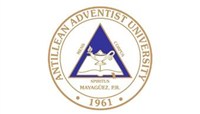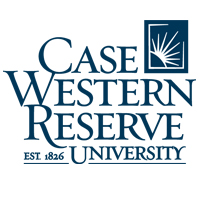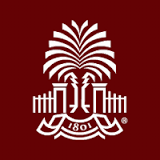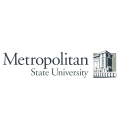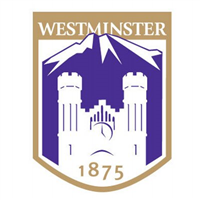What do they do?
Administer anesthesia, monitor patient's vital signs, and oversee patient recovery from anesthesia. May assist anesthesiologists, surgeons, other physicians, or dentists. Must be registered nurses who have specialized graduate education.
Also known as:
Certified Registered Nurse Anesthetist (CRNA), Nurse Anesthetist, Staff Certified Registered Nurse Anesthetist (Staff CRNA), Staff Nurse Anesthetist
-
7.6%
Change
Ranks #41 in job growth rate180Job Openings
Ranks #6 in net job growth
-
Universidad Adventista de las Antillas
Mayaguez, PR
-
Case Western Reserve University
Cleveland, OH
-
University of South Carolina-Columbia
Columbia, SC
-
Saint Mary's University of Minnesota
Winona, MN
-
Drexel University
Philadelphia, PA
Looking for colleges that offer a specific major? Use the College Match Tool to find your best-matched schools and discover your estimated Net Price!
- Doctorate or Professional Degree (18%)
- Master's degree (67%)
- Bachelor's degree (12%)
- Associate's degree (1%)
- Some college, no degree (1%)
- High school diploma equivalent (<1%)
- Less than high school diploma (1%)
People in this career often have these skills:
- Reading Comprehension - Understanding written sentences and paragraphs in work-related documents.
- Critical Thinking - Using logic and reasoning to identify the strengths and weaknesses of alternative solutions, conclusions, or approaches to problems.
- Active Listening - Giving full attention to what other people are saying, taking time to understand the points being made, asking questions as appropriate, and not interrupting at inappropriate times.
- Speaking - Talking to others to convey information effectively.
- Active Learning - Understanding the implications of new information for both current and future problem-solving and decision-making.
- Monitoring - Monitoring/Assessing performance of yourself, other individuals, or organizations to make improvements or take corrective action.
- Complex Problem Solving - Identifying complex problems and reviewing related information to develop and evaluate options and implement solutions.
- Judgment and Decision Making - Considering the relative costs and benefits of potential actions to choose the most appropriate one.
- Science - Using scientific rules and methods to solve problems.
- Social Perceptiveness - Being aware of others' reactions and understanding why they react as they do.
- Service Orientation - Actively looking for ways to help people.
- Writing - Communicating effectively in writing as appropriate for the needs of the audience.
- Learning Strategies - Selecting and using training/instructional methods and procedures appropriate for the situation when learning or teaching new things.
- Coordination - Adjusting actions in relation to others' actions.
- Time Management - Managing one's own time and the time of others.
People in this career often know a lot about:
- Medicine and Dentistry - Knowledge of the information and techniques needed to diagnose and treat human injuries, diseases, and deformities. This includes symptoms, treatment alternatives, drug properties and interactions, and preventive health-care measures.
- Customer and Personal Service - Knowledge of principles and processes for providing customer and personal services. This includes customer needs assessment, meeting quality standards for services, and evaluation of customer satisfaction.
- Biology - Knowledge of plant and animal organisms, their tissues, cells, functions, interdependencies, and interactions with each other and the environment.
- Chemistry - Knowledge of the chemical composition, structure, and properties of substances and of the chemical processes and transformations that they undergo. This includes uses of chemicals and their interactions, danger signs, production techniques, and disposal methods.
- Mathematics - Knowledge of arithmetic, algebra, geometry, calculus, statistics, and their applications.
- Education and Training - Knowledge of principles and methods for curriculum and training design, teaching and instruction for individuals and groups, and the measurement of training effects.
- English Language - Knowledge of the structure and content of the English language including the meaning and spelling of words, rules of composition, and grammar.
- Psychology - Knowledge of human behavior and performance; individual differences in ability, personality, and interests; learning and motivation; psychological research methods; and the assessment and treatment of behavioral and affective disorders.
- Physics - Knowledge and prediction of physical principles, laws, their interrelationships, and applications to understanding fluid, material, and atmospheric dynamics, and mechanical, electrical, atomic and sub-atomic structures and processes.
- Computers and Electronics - Knowledge of circuit boards, processors, chips, electronic equipment, and computer hardware and software, including applications and programming.
People in this career often have talent in:
- Problem Sensitivity - The ability to tell when something is wrong or is likely to go wrong. It does not involve solving the problem, only recognizing that there is a problem.
- Oral Comprehension - The ability to listen to and understand information and ideas presented through spoken words and sentences.
- Written Comprehension - The ability to read and understand information and ideas presented in writing.
- Information Ordering - The ability to arrange things or actions in a certain order or pattern according to a specific rule or set of rules (e.g., patterns of numbers, letters, words, pictures, mathematical operations).
- Oral Expression - The ability to communicate information and ideas in speaking so others will understand.
- Written Expression - The ability to communicate information and ideas in writing so others will understand.
- Deductive Reasoning - The ability to apply general rules to specific problems to produce answers that make sense.
- Inductive Reasoning - The ability to combine pieces of information to form general rules or conclusions (includes finding a relationship among seemingly unrelated events).
- Near Vision - The ability to see details at close range (within a few feet of the observer).
- Speech Clarity - The ability to speak clearly so others can understand you.
- Speech Recognition - The ability to identify and understand the speech of another person.
- Selective Attention - The ability to concentrate on a task over a period of time without being distracted.
- Fluency of Ideas - The ability to come up with a number of ideas about a topic (the number of ideas is important, not their quality, correctness, or creativity).
- Category Flexibility - The ability to generate or use different sets of rules for combining or grouping things in different ways.
- Perceptual Speed - The ability to quickly and accurately compare similarities and differences among sets of letters, numbers, objects, pictures, or patterns. The things to be compared may be presented at the same time or one after the other. This ability also includes comparing a presented object with a remembered object.
People in this career often do these activities:
- Implement advanced life support techniques.
- Administer intravenous medications.
- Treat medical emergencies.
- Monitor patient conditions during treatments, procedures, or activities.
- Administer blood or other fluids intravenously.
- Prescribe medications.
- Select medical equipment for addressing patient needs.
- Prepare medications or medical solutions.
- Prepare medical supplies or equipment for use.
- Analyze patient data to determine patient needs or treatment goals.
- Administer anesthetics or sedatives to control pain.
- Develop medical treatment plans.
- Process healthcare paperwork.
- Collect medical information from patients, family members, or other medical professionals.
- Examine patients to assess general physical condition.
- Record patient medical histories.
- Examine medical instruments or equipment to ensure proper operation.
- Maintain medical equipment or instruments.
- Collaborate with healthcare professionals to plan or provide treatment.
- Analyze test data or images to inform diagnosis or treatment.
- Operate diagnostic imaging equipment.
- Operate diagnostic or therapeutic medical instruments or equipment.
- Administer basic health care or medical treatments.
- Collect biological specimens from patients.
- Maintain medical or professional knowledge.
- Train medical providers.
- Clean medical equipment or facilities.
This page includes data from:

 Occupation statistics: USDOL U.S. Bureau of Labor Statistics Occupational Employment Statistics
Occupation statistics: USDOL U.S. Bureau of Labor Statistics Occupational Employment Statistics
 Videos: CareerOneStop, USDOL/ETA and the Minnesota Department of Employment & Economic Development
Videos: CareerOneStop, USDOL/ETA and the Minnesota Department of Employment & Economic Development


